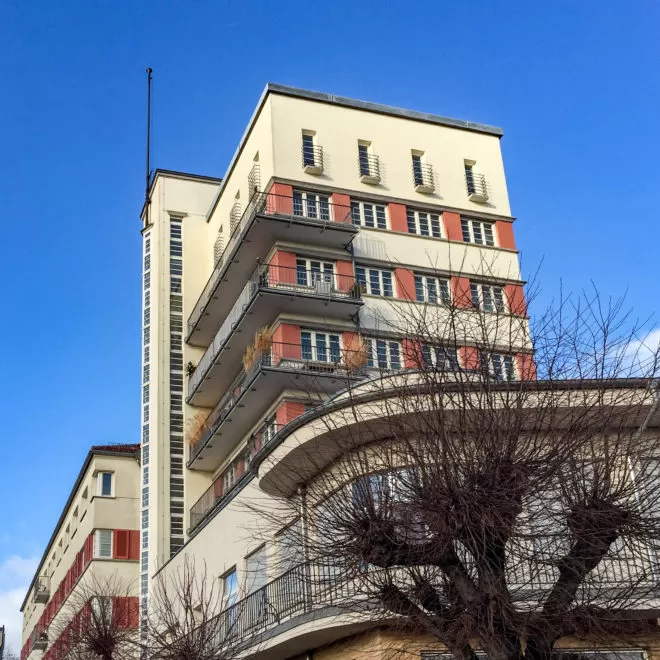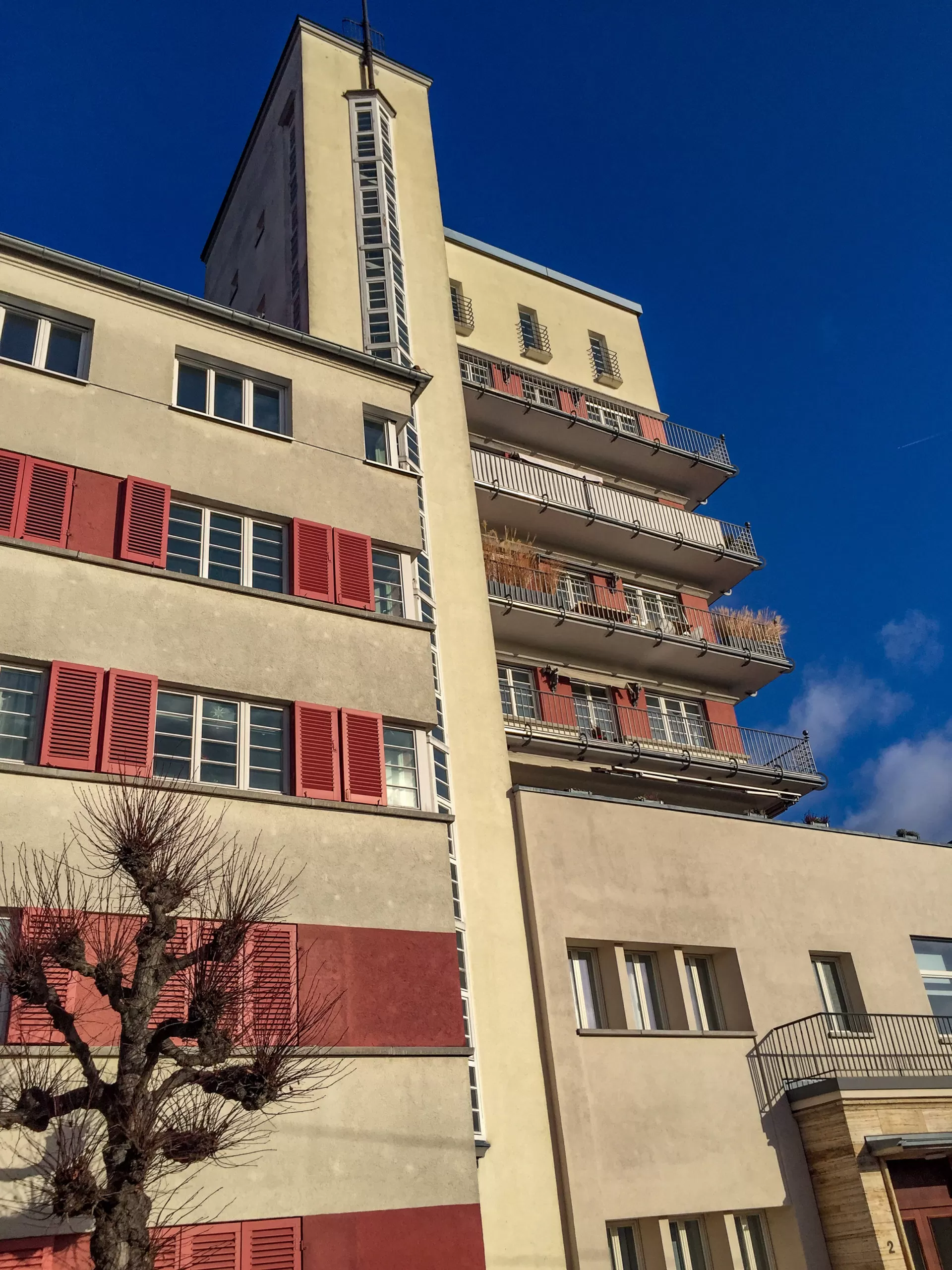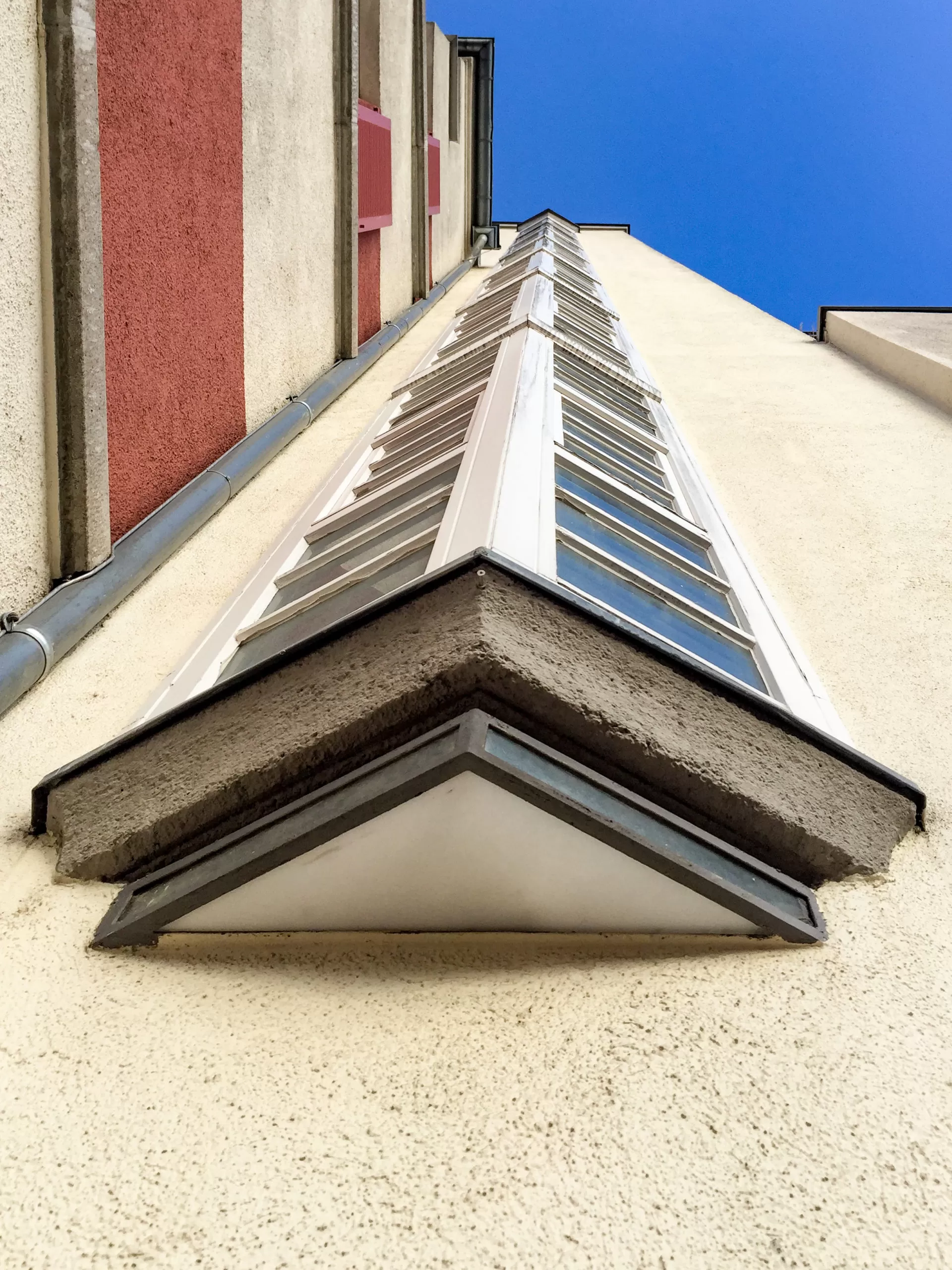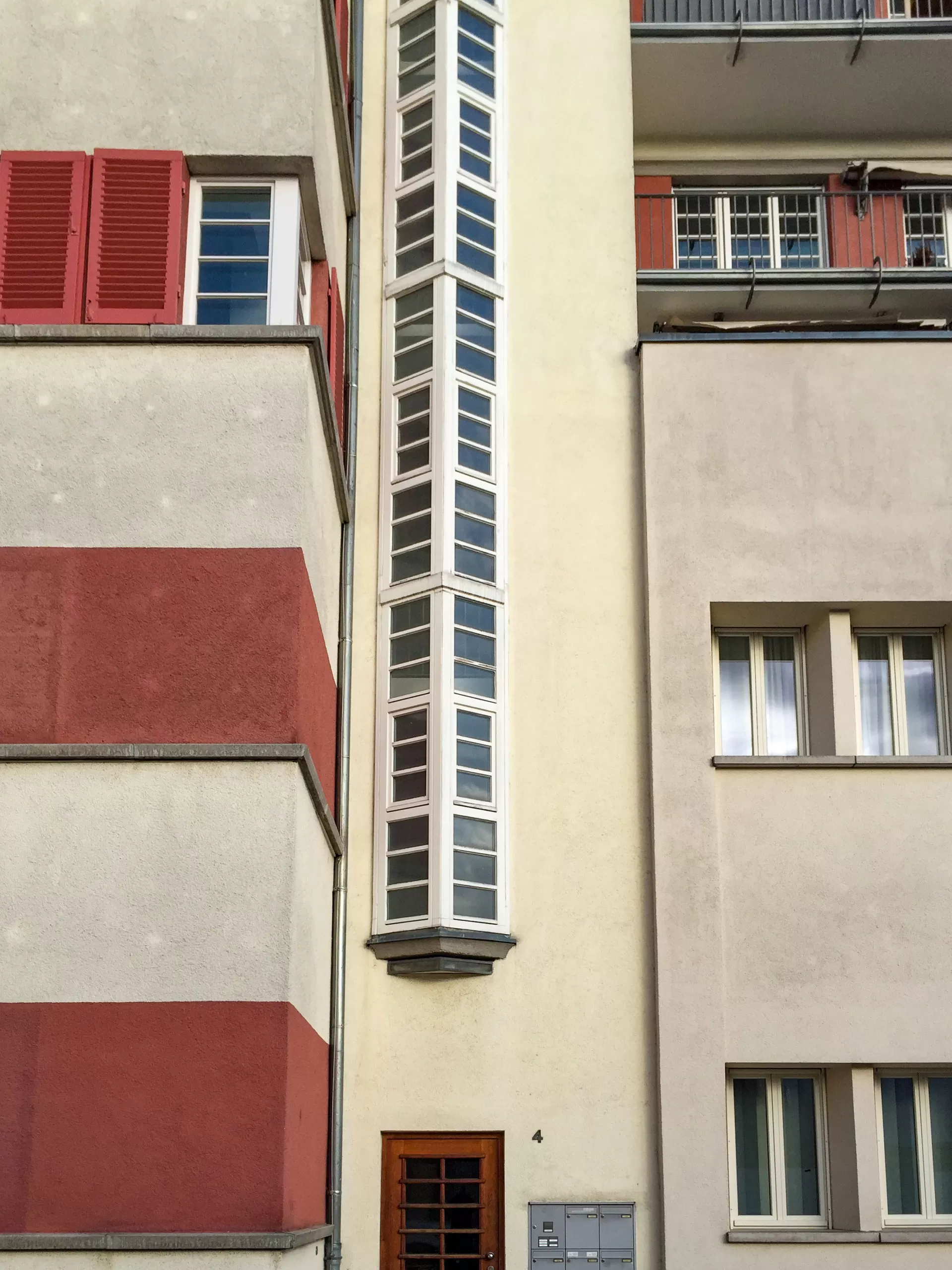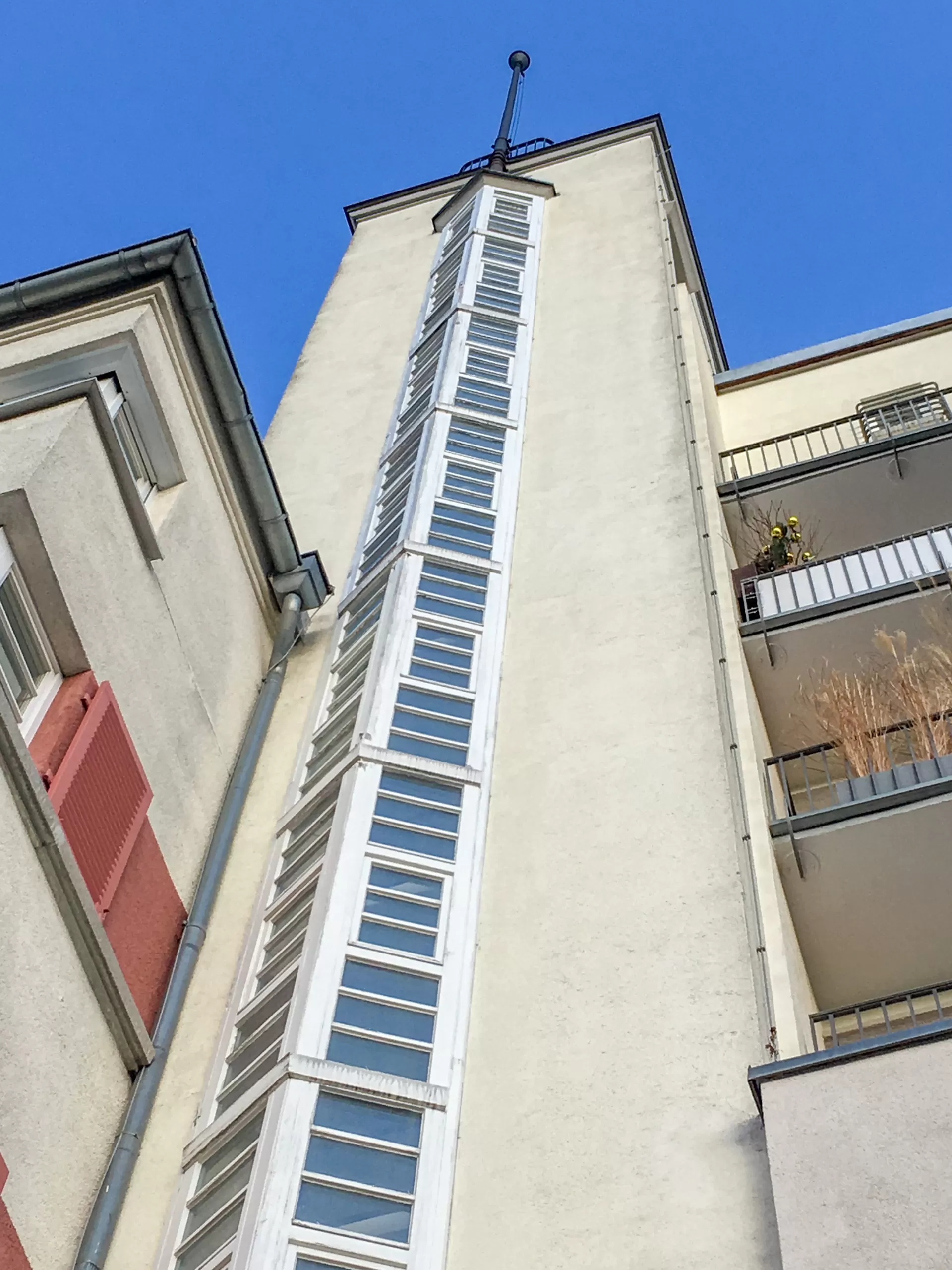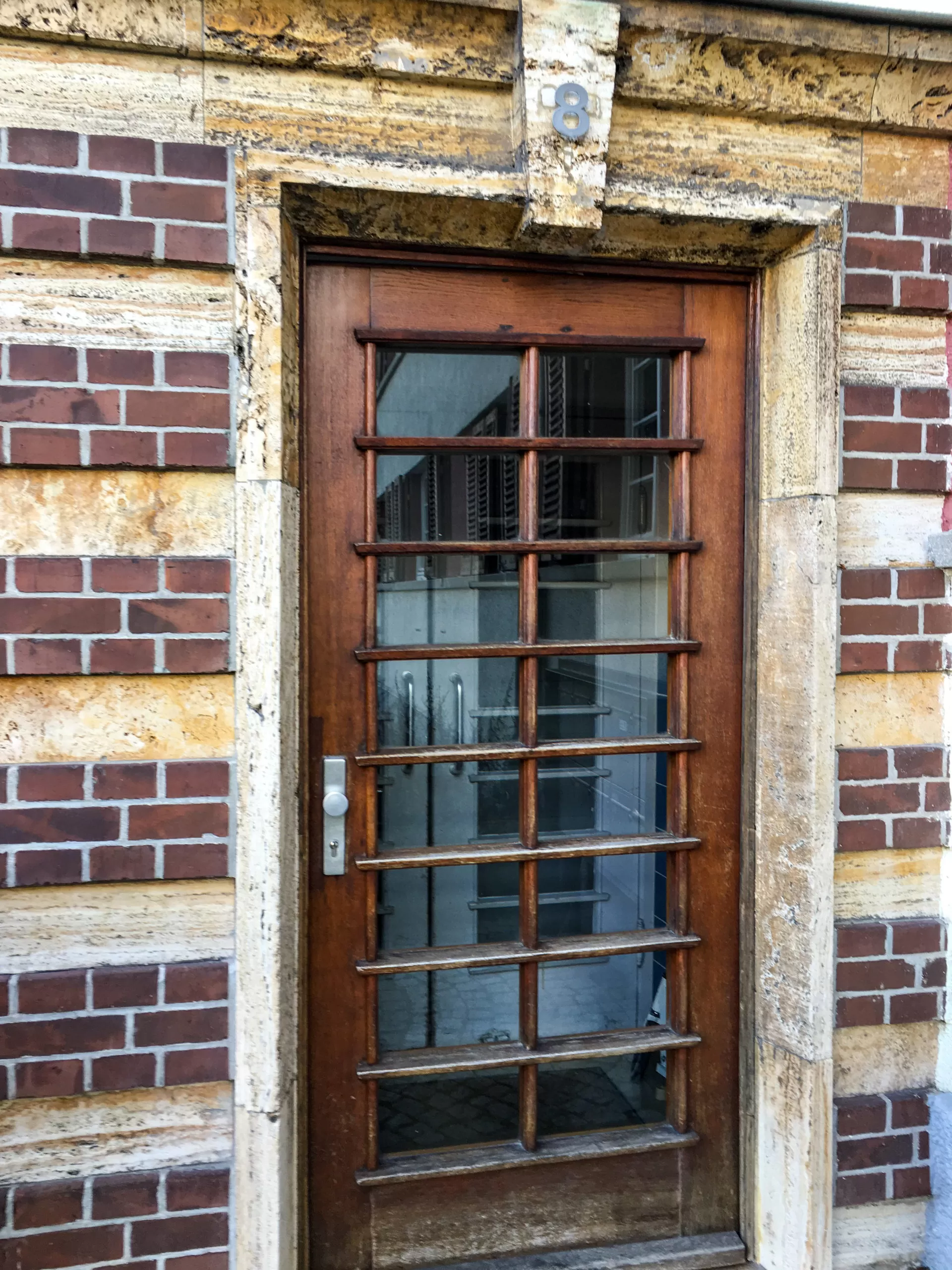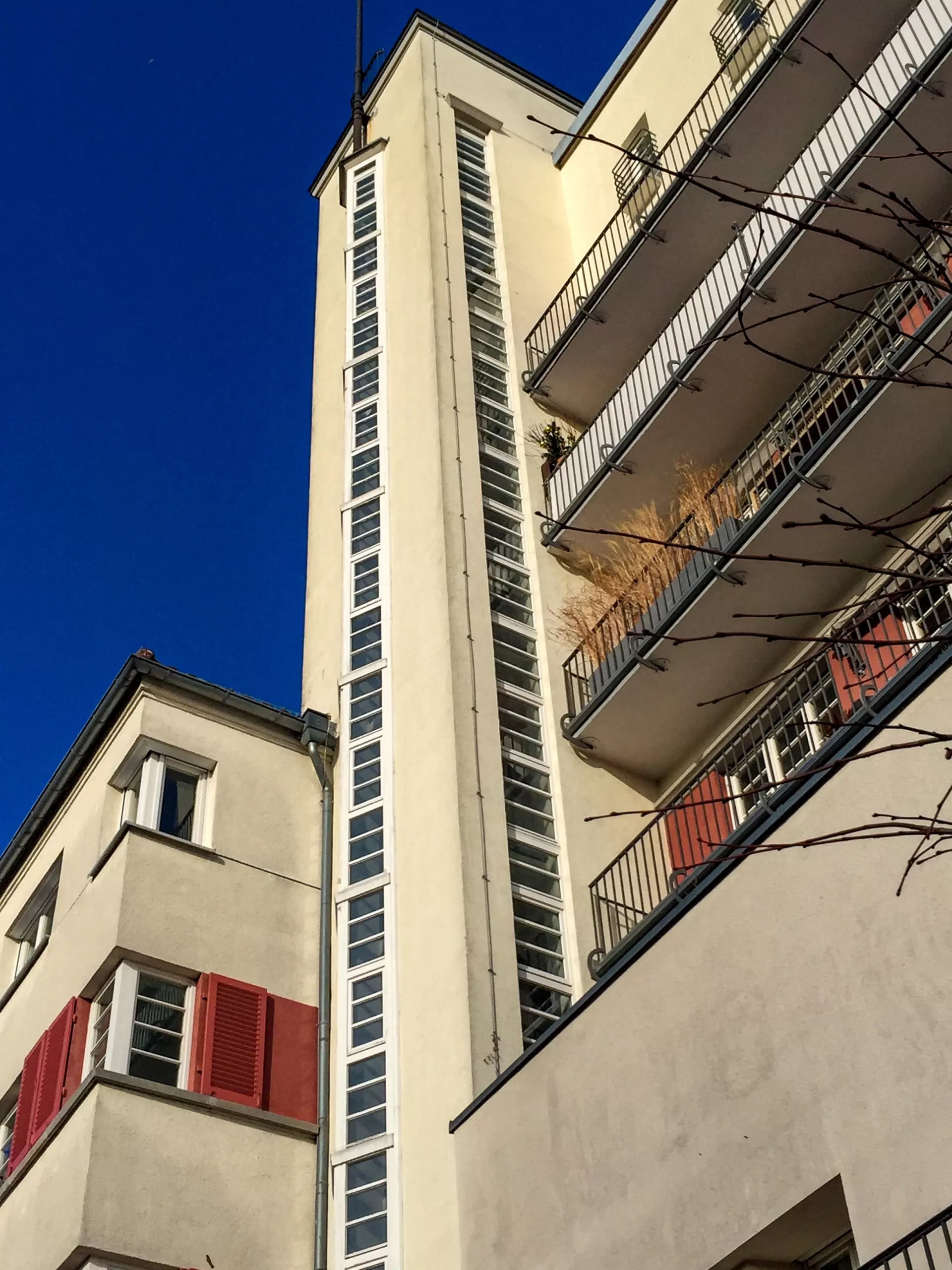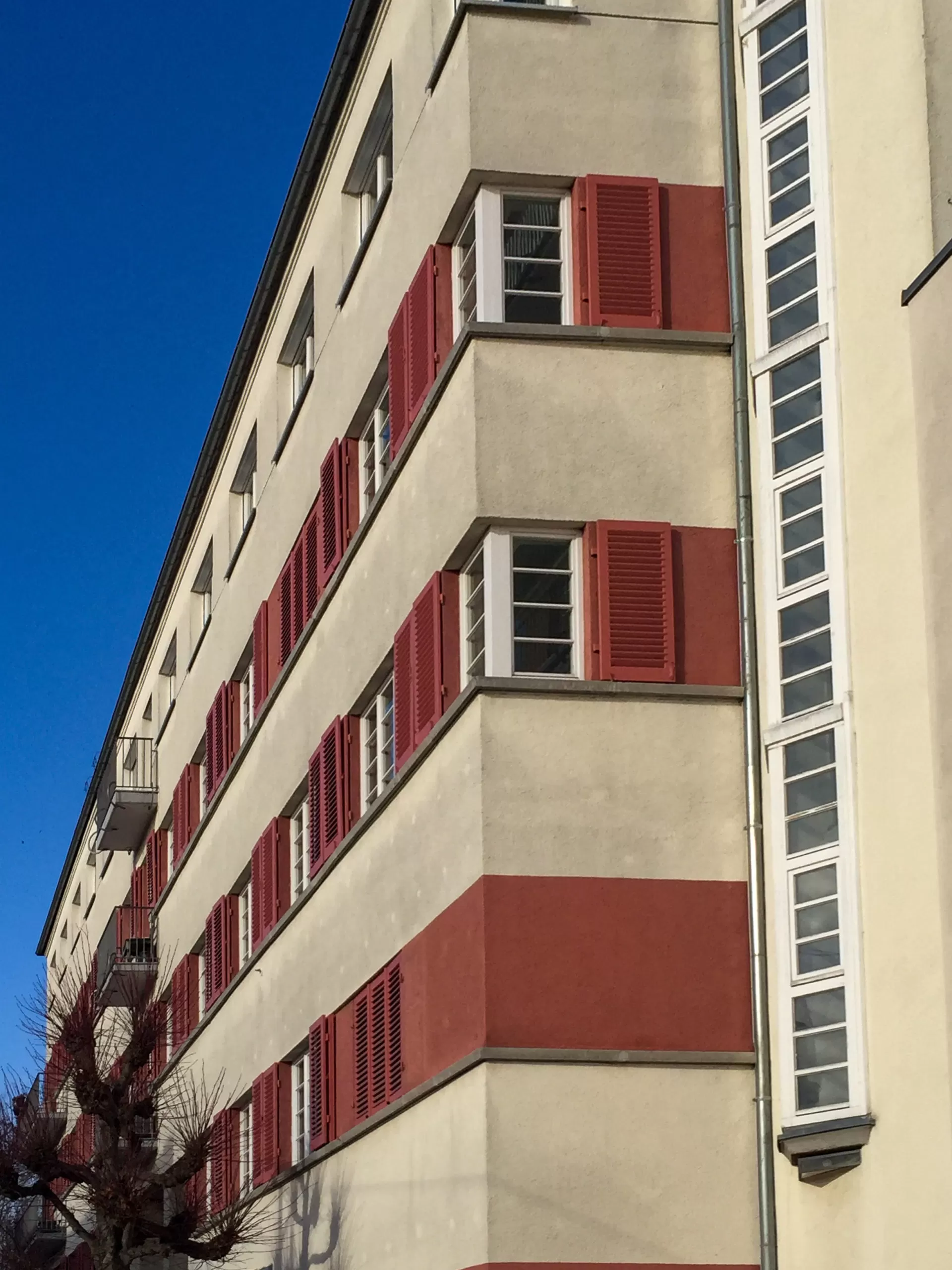1927 – 1929
Architect: Karl Beer
Hölzelweg 2-8, Am Weißenhof 34-42, Stuttgart
Friedrich-Ebert-Wohnhof
Opposite the residential buildings by Hans Scharoun and Peter Behrens is the listed Friedrich Ebert residential complex, which is no longer part of the Weissenhofsiedlung.
The housing estate was built between 1927 and 1929 according to plans by architect Karl Beer.
Karl Beer
Karl Beer attended the Baugewerkschule Stuttgart, a predecessor of today’s Hochschule für Technik Stuttgart, where he graduated in 1910 under Clemens Hummel.
He worked in his architectural office until 1915.
Around 1914, he founded the Pfeiffer-Beer architects’ association, which existed until 1920.
From 1921 to 1923 he worked as a freelance architect.
From 1924 on, his activities focused on cooperative housing construction, especially on behalf of the Bau- und Heimstättenverein Stuttgart.
Cooperative Housing Complex
The cooperative housing complex with numerous elements of Neues Bauen consists of an eight-story tower house, three five-story residential wings, and a two-story restaurant and hall building.
Together, these components enclose a residential courtyard as an irregular four-wing complex.
The owner of the residential complex was the Bau- und Heimstättenverein Stuttgart building cooperative.
Apartments and Restaurant
The housing complex comprised a total of 87 apartments with one to four rooms.
The flat, elongated restaurant wing in front of the tower house housed the former “Schönblick” excursion restaurant.
Paul Schmitthenner
In 1938, the interior was redesigned by architect Paul Schmitthenner.
Restoration
Between 1995 and 1997, the housing complex was renovated by the cooperative Bau- und Heimstättenverein Stuttgart according to plans by the Stuttgart architectural firm Kopper-Schenkel.
The roofs and the attics added after the war in 1951, the stairwells, transom windows, balconies and cornices, the technical interiors and the outdoor facilities were all part of the refurbishment in keeping with the preservation order.
True to the old plans, the light caterpillar on the tower apartment building, which was one of the first of its kind in Stuttgart, was also refurbished.
Conversion
From 2008 to 2011, the listed former high-altitude restaurant was converted into an apartment building.

